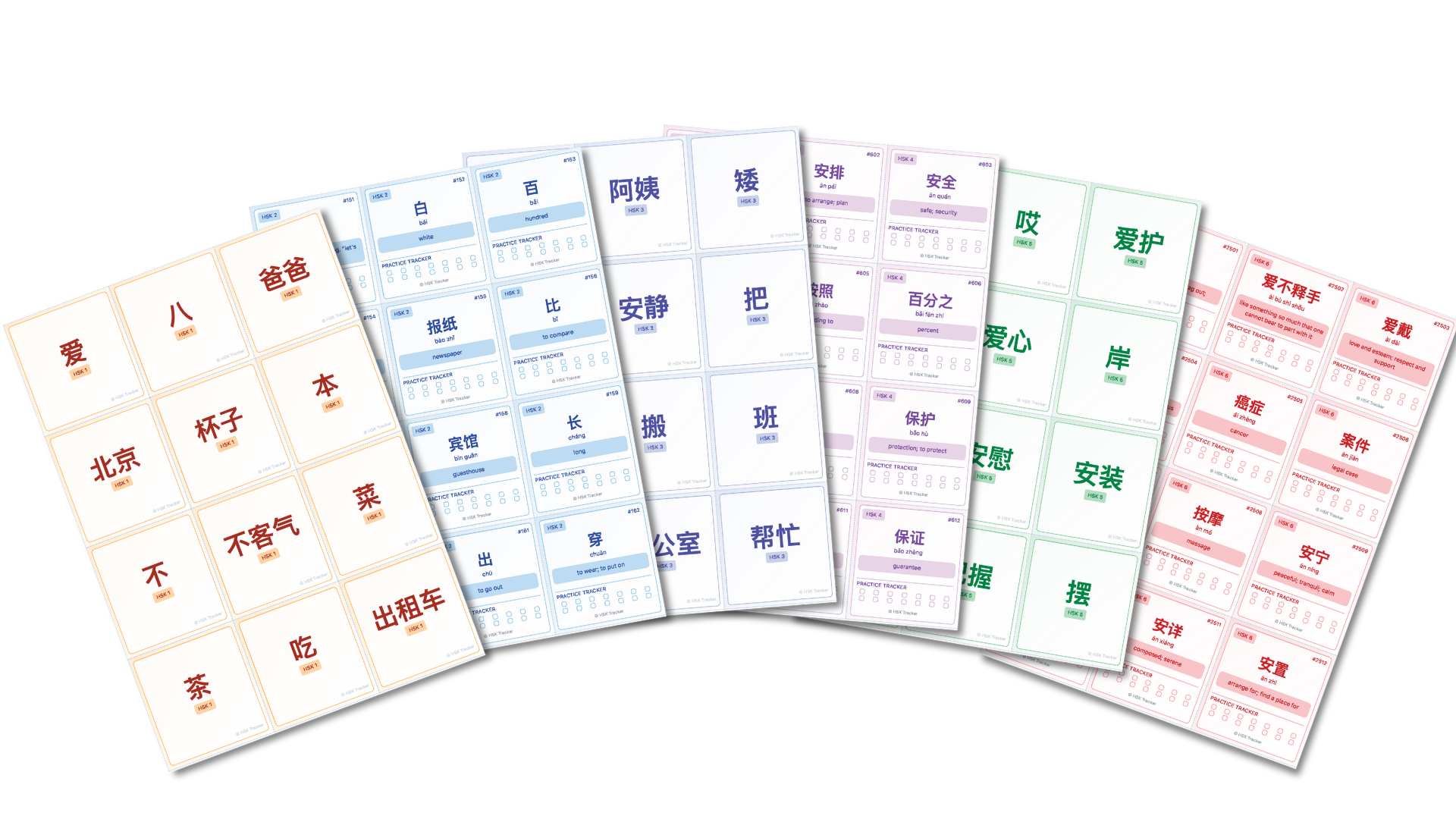Master Chinese characters, track your progress, and ace your HSK exam. Start today with free HSK 1 access.
Track your progress with detailed charts
Complete HSK vocabulary lists 1-6
Practice writing with custom lists
Download HSK posters & flashcards
Keep tracked of your progress with data-driven insights on your HSK journey.
Download and print resources designed to accelerate your Chinese learning journey

Posters in two learning modes: with pinyin for starters, without for advanced practice. Perfect for visual learning and daily review.
Start for Free
Level 1 available after registration

Printable flashcards with self-tracking. Track your progress while learning characters, pinyin, and meanings - all in one card.
Start for Free
Level 1 available after registration
Complete access to HSK levels 1-6 vocabulary
The Tracker Board
Track progress & set personalized goals
The Vocabulary List
6000+ words with audio & pinyin
The Writing List
Custom lists based on your progress
Everything from Monthly plan
All tracking & learning features
Printable HSK Resources
2 Months Free
Secure payment by Stripe